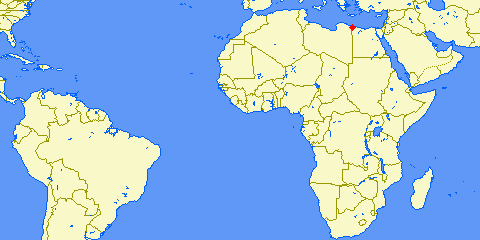Auke Visser's MOBIL Tankers & Tugs Site | home
Schulau - (1929-1935)
Unfortunaly no picture available, anyone ?????
See also : Vacoil - (1923-1929) & Eocene - (1935-1942)
Built 1922 at Baltimore Dry Dock & Shipbuilding Company, Maryland, as FORT MCHENRY. She entered Socony-Vacuum's British-flag
fleet by a long, circuitous route, having borne three previous names (FORT MCHENRY, VACOIL and SCHULAU) under two other flags
before finally becoming EOCENE.
The original US-flag FORT MCHENRY was equipped with a towing machine and a "wireless" - the latter with a "daylight range" of 250 miles.
She was fitted to carry either cargo or water ballast in her double bottoms.
In April 1924 FORT MCHENRY was purchased by the Vacuum Oil Company and renamed VACOIL, retaining her American registry. Five
years later, in January 1929, ownership of the VACOIL was transferred to a Vacuum affiliate, the Deutsche Vacuum Oil Company AG, and
renamed SCHULAU under German registry. SCHULAU remained with this Vacuum affiliate for four years after the merger, lifting Russian
kerosene and Baku benzine out of Batumi, USSR, for the Mediterranean markets. Not until February 1935, was the SCHULAU transferred
to the British flag under the holding ownership of the Standard Transportation Company Limited of Hong Kong and renamed EOCENE. At
that time she was assigned to the Istanbul fleet.
She was working out of Istanbul when WWIl broke out. Life continued as usual for EOCENE, until April 1941, when she was immobilised
in the Bosphorus due to the presence of strong enemy forces in the Aegean Sea and around the Dodecanese Islands. In August of that
year the Germans got rather involved on the Russian front, and EOCENE, then under British Admiralty control, tried to run the Aegean
Sea blockade. She left Istanbul on 18 August, kept in Turkish territorial waters as much as possible and eventually arrived safely at Port
Said, Egypt. There she was taken over for special service with the British Sea Transport, carrying aviation gasoline to support
General Montgomery's operations in the African desert.
In the course of this duty EOCENE left Alexandria in convoy for Tobruk. On 20 May 1942, 60 miles east of her destination, she was torpe-
doed. Luckily there was no immediate fire, but the benzine fumes were so strong that men were sickened and fear of explosive fire ran
high. Captain Henry W Willcox gave orders to abandon ship. Subsequently all hands were picked up by a convoy rescue ship, and from
its decks they watched EOCENE break in the middle and go down. No lives were lost.
Additional information Starke & Schell registers :
FORT McHENRY - 1922 USA 1T (aft) (10½)
4,218 GRT for Bethlehem SB. Corp., Baltimore 340.1 x 49.2
Tanker build by Bethlehem SB. Corp., Ltd., Baltimore (8) #125 222013
1923 - VACOIL Vacuum Oil Co., Inc., New York
1929 - SCHULAU Deutsche Vacuum Oel A.G., Hamburg GE
1935 - EOCENE Standard Transportation Co., Ltd., Hong Kong BR 159416
1941 - Socony-Vacuum Transportation Co., Ltd., London
Torp. and sunk by U 431, 20 May 1942, in 31.56N-25.14E, voy. Alexandria - Tobruk, benzine & water
Additional information from Uboat.net :
Name: Eocene
Type: Steam tanker
Tonnage: 4.216 tons
Completed: 1922 - Bethlehem Shipbuilding Corp, Baltimore MD
Owner: Socony Vacuum Transportation Co Ltd, Montreal
Homeport: London
Date of attack: 20 May, 1942
Nationality: British
Fate: Sunk by U-431 (Wilhelm Dommes)
Position: 31.56N, 25.14E - Grid CO 9125
- See location on a map -

Complement: 43 (0 dead and 43 survivors).
Convoy: AT-46
Route: Alexandria (18 May) - Tobruk
Cargo: 1980 tons of benzine and 3700 tons of water
History: Built as Fort McHenry, 1923 renamed Vacoil, 1929 renamed Schulau, 1935 renamed British Eocene for
Standard Transportation Co Ltd, Hong Kong; 1941 transferred to Ministry of War Transport (MoWT).
Notes on loss: At 20.19 hours on 20 May 1942, the Eocene (Master H.W. Wilcox) in convoy AT-46 was torpedoed and
sunk by U-431 near Sollum. The master, 34 crew members, six gunners and two army engineers were picked up by the
British armed trawler HMS Cocker and landed at Tobruk.